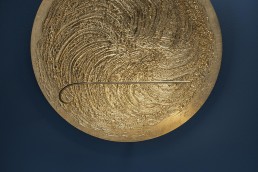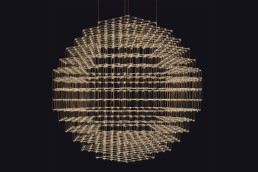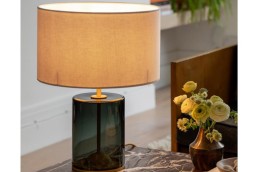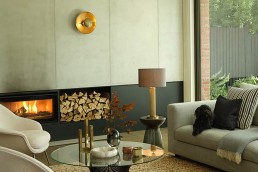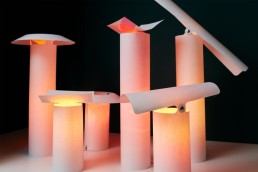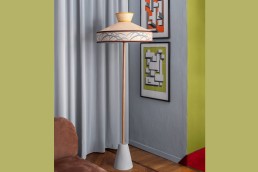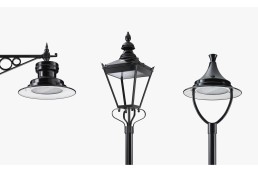Moooi opens showroom in LA
(USA) – Lifestyle brand Moooi has announced its latest showroom in Culver City, Los Angeles is now open.
Designed by Amsterdam-based studio, BeyondSpace, the showroom’s interior displays a minimalist space, inspired by the work of artist Richard Serra while also partnering with Senso, a sustainable Dutch flooring company, together creating one-of-kind space. The curved layout of the room evokes the feeling of curiosity and is curated to complement Moooi’s pieces.
The showroom is available to visit by appointment only to provide a personalised experience for clients, while visitors can engage in talks, styling sessions, and exclusive events. Local Moooi dealers can also use the space as an extension of their own showrooms, offering to showcase the latest and greatest from Moooi’s collection.
Joshua Muenzenmayer, Moooi’s Head of Americas, says: “Los Angeles is one of the cultural and economic capitals of the world – filled with creators, innovators, and trendsetters. I couldn't think of a better community to bring Moooi's creative and luxurious collection to, alongside Senso, who shares our same commitment to quality and innovation."
Catellani & Smith - Bellatrix
(Italy) – Catellani & Smith introduces Bellatrix, a new wall lamp inspired by the Orion constellation.
The lamp is handcrafted into an irregular disk shape with a 120cm diameter and hand-painted in gold-coloured leaf. Available in two different patterns, which include one with a movement of hand-drawn radial lines and a second on which a swirling pattern is visible.
The disc is lit with nine LED boards built into a brass rod with a diameter of 10mm and is supported by a flexible brass arm to adjust the light as desired. The interplay of Light with an irregular gilded surface, together with the indirect light affect, is signature to Catellani & Smith.
Quasar - Pixel Sphere
(Netherlands) – Quasar welcomes a new addition to the Jam Pauwels collection with Pixel Sphere ceiling light.
Pixel Sphere is a twist on the standard Cosmos Square within the collection. Through its ‘stepped layers’ from a distance, the fixture is spherical in appearance but made up of 12.5sqcm and comprised of metal rods and LEDs. Its size is 170cm x 170cm x 203cm, however, it can be customised to any requirements.
Original BTC - Crosby
(UK)- England-based luxury lighting brand Original BTC launches its first glass-based table lamp marking the opening of its Oxfordshire glassworks.
The manufacturer moved its glass-making operation from Birmingham to Oxfordshire in 2023 in a strategic move to improve environmental impact while retaining staff and centuries-old glassblowing traditions, which are showcased in Crosby’s design.
Charlie Bowels, Director of Original BTC, says: “Our commitment to British manufacturing has remained steadfast since our launch in 1990. As a family-run business, we want to take responsibility for our impact on the world around us. Local production, timeless design, quality materials and the finest craftsmanship have always been the cornerstones of Original BTC.”
He adds: “In 2011, we purchased English Antique Glass, the country’s only remaining manufacturer of flat glass, to craft glass shades as well as continue flat glass production. When asked to leave the original factory as the site was being re-developed, we chose to relocate to our Witney headquarters, investing heavily in the creation of a new space that would reduce component and travelling miles between our manufacturing and assembly facilities, as well as reducing our need for packaging – a great stride forward in our sustainability journey.”
Crosby’s design features a glossy anthracite cylinder fitted with a solid brass base, sandblasted to create a textured finish with a neatly curved opening for the cable. Available in three sizes and topped with a linen shade and cotton cable.
Meet the New Designers: George Almond
In a special three-part Q&A series on the New Designers awards programme, darc magazine has spotlighted standout designers recognised for their contributions to decorative lighting product design.
New Designers is an annual exhibition that brings together graduate design talent from across the UK, which made its return to the BDC in London for its 39th year. The event featured the work of 3,000 graduates from over 100 universities.
For those of you who missed it, check out the first two designer interviews darc held with Oscar Parkinson and Holly Munro to discover more about their experiences of the event and their lighting creations.
For our third and final Q&A, darc talks to Habitat award winner George Almond. Almond is an undergraduate from Nottingham Trent University where he studies Product and Furniture Design. His design won the Habitat New Designer award for his Dondo rocking stool and Lever floor lamp, which has gained him a mentoring programme from Habitat's design studio.
Can you share a bit about your background and what led you to pursue a career in design?
My background in design most likely stemmed from my family. We are all quite practical people and enjoy creating things. My parents built our house, so I grew up on a construction site; often playing around with offcuts and scrap material. I enjoy making things with my hands and so this led me down the road of designing and making. Over the COVID-19 pandemic lockdown, with the help of my dad, I built a small workshop in our garage so that I could do various woodwork projects in the ample free time I had. I liked learning new techniques and developing my practical skills.
What significance does winning the New Designer Award hold for you, and how will it impact your career?
Winning the Habitat New Designer Award has been a massive achievement for me. Being able to go and present my work was a fantastic opportunity in itself, but winning an award has allowed me to have more conversations and connections across the design industry than I ever thought I could. This award will be a great head start in my career in design and allow me to achieve my goals in the industry.
What inspired you to create a lighting collection specifically?
This project was an experimentation of materials and processes. The forms I was playing with and creating led perfectly into a light shade for an adjustable floor light. The process dictated the sizes and shape of the shade, making it most suitable for a larger floor lamp rather than a pendant or desk lighting.
Could you elaborate on the inspiration and creative process behind your award-winning design?
I find inspiration in mastering new skills and exploring innovative processes, driving me to push materials to their limits and forge innovative design solutions. This project was conceived with the aim of harnessing steam-bending as a process-driven design approach, leveraging the inherent properties of the material to their fullest extent. By capitalising on the natural tension generated during the bending of wood, I crafted a joint devoid of screws or glue, achieving both structural integrity and aesthetic elegance. The lamp's adjustability is facilitated through a clamp-like mechanism, strategically designed to utilise opposing forces, creating a lever that prevents the arm from sliding when angled.
With my work, I aim to provide new solutions to problems with an appropriate use of materials and consideration for manufacturing processes. I don’t want to design more of what is already available, it has to be unique and intriguing for the user.
Which environment is your product best suited to, and why? For example, the hospitality market, residential, somewhere else?
The functionality of the floor lamp leans itself to the residential environment due to its adjustability for different uses. At its maximum height, the lamp casts a gentle ambient glow, perfect for creating an inviting room atmosphere. Lowering the shade directs light into a focused area, ideal for illuminating workspaces or study areas. The versatility of the Lever Floor Lamp ensures its adaptability to various settings and applications throughout the home.
Does sustainability and responsible design influence your design choices and processes?
My main focus for sustainability with this project was to use materials as effectively as possible, reducing waste and unnecessary material usage. Through steam bending I was able to use a single piece of wood to form the shade, joint, and movement mechanism, reducing the need for additional materials and machine processes. Product end-of-life is also important, which is why each component of my light can be separated into single materials for recycling or reuse.
Do you see yourself continuing in the field of lighting design, or do you have other areas of interest you'd like to explore in the future?
Having studied Furniture and Product design, I don’t want to limit myself to a single niche aspect of the design industry. As much as I enjoy lighting, I would also like to continue in the field of furniture. Interaction with good design is something I enjoy, whether that be lighting or something else like seating, so in the future I will continue to put user engagement at the centre of my designs.
What are your aspirations for the next five years?
Currently, I don’t have a specific path I want to follow. I enjoy the practical side of design, being in the workshop making prototypes and experimenting with physical models. I would like to see myself working in a role that would allow me to continue my passion for designing through making. I know that I still have a lot to learn, so aspire to continue expanding my knowledge and developing my skills as a designer.
www.instagram.com/george.almond_design
Luxxbox partners with Panzeri
(International) - The international designer of acoustic lighting Luxxbox announced its partnership with renowned Italian lighting brand, Panzeri.
The strategic merger presents Luxxbox the opportunity for continued growth and to enter new European markets where sound absorption in commercial environments has become increasingly important for designers. For Panzeri, the partnership will expand its US presence, aligning two companies dedicated to creating lighting fixtures that enhance the well-being of spaces.
Panzeri and Luxxbox share a strong commitment to corporate culture, authentic design, and product quality, making the benefits of their partnership evident from the start. Both companies design and manufacture products in-house focusing their attention to details to create unique market offerings. This also allows both companies to uphold eco-sustainable productivity by adopting innovative equipment, technology, and design practices.
Jason Bird, Founder and Creative Director of Luxxbox, says; “This is a great opportunity for Luxxbox’s ongoing growth, and I’m excited to embark on this journey with Panzeri. There is a genuine understanding of our shared values and how we can work together to benefit each other, and most importantly, our customers.”
Industville releases its range with John Lewis
UK) - Sustainable hand-crafted lighting and décor company has launched a range of products with British retailer John Lewis.
Its partnership signals an expansion in Industville’s retail presence.
Launched on 26 June, the selection of 27 products and designs are now available on the John Lewis website. The edit includes decorative and function pieces including wall fixtures, pendants and table lamps.
Mara Rypacek, Founder of Industville, says; “We are incredibly proud to partner with John Lewis. Their reputation for excellence and commitment to quality aligns perfectly with or core values and together we look forward to illuminating homes across the nation with our design-led, handcrafted lighting. The collaboration is already off to an exciting start with orders rolling in and we’re excited to see what the future holds.”
Meet the New Designers: Oscar Parkinson

New Designers is an annual exhibition that brings together graduate design talent from across the UK, which made its return to the BDC in London for its 39th year. The event featured the work of 3,000 graduates from over 100 universities.
Continuing our Q&A series covering emerging decorative lighting designs from the event, darc speaks with the Made.com Stand Out winner Oscar Parkinson who made waves with his Riso printed paper lights.
To read our first Q&A in the series with designer Holly Munro and to find out more about the New Designers awards, click here.
Can you share a bit about your background and what led you to pursue a career in design?
I just finished up my BA in product and furniture design at Kingston School of Art (KSA), before which I did an art foundation (also at KSA). In my foundation year I studied visual communication, which led me to start a graphic design course. I learnt a lot from these two years, but when I was extruding letterforms to try and make benches, I started to reconsider which course was right for me. So, I switched over to product and furniture design, which was a much better fit for me. I’m definitely most suited to the world of 3D design.
What significance does winning the New Designer Award hold for you, and how will it impact your career?
Winning an award from Made.com at New Designers awards was a big surprise for me and it was nice to have a series of paper lights recognised by such a large brand that is probably best known for its furniture. It has given me a lot of confidence in my ability and the kind words from the MADE team about the project have definitely made me want to take the project forward and formalise it into a fully formed product.
What inspired you to create a lighting collection specifically?
I’ve found myself designing lighting quite a lot over the duration of my course. I particularly love how it can transform the atmosphere of a space in a way that other designed objects often cannot. I also love how light can bring out properties of materials that are hidden under normal circumstances, something which the Riso series explores in particular with paper and print.
Could you elaborate on the inspiration and creative process behind your award-winning design?
The Riso collection is a series of six paper lights that celebrate the process of risograph printing. A quick and affordable form of ‘digital screen printing’, the riso machine prints colours one at a time in layers that can be built up to form new tones. The paper shades are all printed on the inside, protecting the delicate prints from smudging, as the soy-based ink never fully dries, which leads to an element of surprise when the light turns on and the print is revealed. Lots of the design was informed by the restrictions of the riso machine such as the paper weight, which is the heaviest the riso machine can print on; and size, as all elements have to be able to fit on either A3 or A4. The patterns themselves are informed by either the way the light falls on the paper (in a gradient), paper archetypes (the grid), or the mixing of ink layers (overlapping strokes).
Which environment is your product best suited to, and why? For example, the hospitality market, residential, somewhere else?
I think the Riso lights are best suited to the domestic environment as they create a cosy atmosphere with the orange and pink from the prints creating a warm light. Although I wouldn’t want to limit their application if someone saw potential in them that I haven’t.
Does sustainability and responsible design influence your design choices and processes?
With the ink being soy-based, that sustainable aspect of risograph printing was a big draw for me to start testing for the Riso lights. I wanted to build on that, with every element of each design being able to be replaced if damaged. I could have glued the paper shade to the bases for example but decided to keep them separate to hopefully encourage users to simply replace the shade rather than throw away the whole thing if it became damaged.
Do you see yourself continuing in the field of lighting design, or do you have other areas of interest you would like to explore in the future?
I would love to keep designing lights and have a couple of ideas in the pipeline alongside developing the Riso lights. I would love to do something on a larger scale to see how that could affect a space differently to the smaller scale I’ve been working on so far. A site-specific project where I can try and create an atmosphere for a particular crowd or activity would be really fun. I do love designing beyond lighting as well though and want to keep the space to design products and furniture in all its forms.
What are your aspirations for the next five years?
I’m just going to see where the next five years take me, I don’t have a specific plan to follow. I want to get as much experience as possible in a wide variety of working environments and see what clicks with me as a way of working and thinking. I would love to keep my own projects going alongside working for other people, so hopefully I can find the space and time for that. I still believe it’s really valuable to learn what you don’t want to do as well as what you do, and I just want to keep a sense of design community and surround myself with people who are up for a good chat about design.
Light Directions Appoints Luc Hediger as Studio Lead of Flagship Studio
(USA) - Light Directions announces its expansion in the Americas, with Studio Lead Luc Hediger overseeing efforts from its new flagship in Miami.
The move follows the launch of studios in London and Dubai, positioning the global lighting design consultancy for continued success and sustainable growth.
Hedigerhas a decade of experience in theatrical and architectural lighting design and is currently working on projects throughout North America, the Caribbean, Africa and Europe. Hediger also served as design director at Yabu Pushelberg, leading a team of lighting designers on award-winning hospitality, residential and retail projects worldwide.
Light Directions Principal, April Comerford, says: “Luc has a keen ability to push beyond the boundaries of what’s possible in lighting design, resulting in richly layered, beautifully tailored projects that reflect a collective vision while are one-of-a-kind in their immersive experience. His articulated point of view, technical proficiency, versatile leadership skills, and strong communication skills will undoubtedly elevate our presence in the Americas and beyond.”
Elements of theatricality and drama in Hediger’s designs reflect influences from his formative years in stage production and event lighting, from Shakespeare plays and Broadway musicals, to a touring dance theatre, and the Coachella Valley Music and Arts Festival.
Hediger, Light Directions Studio Lead the Americas, says:“My career trajectory has brought me to some of the best cities in the world for design, working with renowned studios, brands and partners. I look forward to collaborating with our global studios, leading the growth and development of Light Directions across the Americas, and creating captivating designs.”
Meet the New Designers: Holly Munro

New Designers returned to the BDC in London for its 39th year, celebrating the best emerging talent in design. The show brought together 3,000 design graduates from over 100 universities, showcasing their work across a range of disciplines including Fashion and Costumes, Contemporary Design Crafts, Textiles, Ceramics, Glass, Jewellery, Furniture, Product Design, Industrial and Spatial Design, Graphic Design, and Modern/Digital/Motion Art and Illustration.
New Designers stands as a prime destination for discovering new talent and ideas, offering a glimpse into the future of design. darc magazine has highlighted three up-and-coming designers who earned recognition for their innovative lighting designs in a three-part series of Q&As. The first in this series features Holly Munro, a BA Jewellery and Silversmithing graduate from the Royal Edinburgh College of Art. Munro impressed the judges with her ‘Kerama’ lighting collection, inspired by the Kerama Islands in Japan. Her unique pieces are crafted from recycled metal, making them fully recyclable and easily disassembled.
Can you share a bit about your background and what led you to pursue a career in design?
I recently graduated from Edinburgh College of Art with a Bachelor's degree after completing a four-year undergraduate program. Prior to university, I participated in a portfolio course at the Tramway Visual Arts Studio in Glasgow, which was a transformative experience. This course strongly encouraged me to pursue a path in Design, even though I initially intended to study Fine Art.
The Tramway course stands out as one of the most positive and influential experiences in my Arts and Design education. Navigating the challenges posed by the COVID-19 pandemic at the beginning of my degree and the RAAC concrete issues towards the end, I learned to think creatively and develop innovative solutions. These experiences, though challenging, ultimately enhanced my skills and made me a more resilient and adaptable designer.
In my third year at ECA, I participated and won a competition with the eyewear brand Cubitts. I designed a collection of eyewear using detailed CAD drawings to fine tune my designs, which led to one of my designs being selected to be produced and eventually sold to the public through the Cubitts stores. Additionally, I was chosen for an international exchange to Hiko Mizuno College in Japan, which was an incredible and enriching experience, which helped further my interest into design.
What significance does winning the New Designer Award hold for you, and how will it impact your career?
This award has significantly affirmed the positive feedback I’ve received from the public regarding my design work. After four years of hard work, this recognition is incredibly rewarding and supportive. It gives me the courage to keep taking creative risks and to continue working diligently and knowing that determination truly pays off and can be rewarding through public acceptance and acknowledgment as the New Designer Award has shown. I am hopeful that this award will open new doors and opportunities within the interior design industry.
I am keen to further my work through a design internship or design role where I can further hone my craft and contribute in the design process within projects therefore, the professional exposure will not only be a great learning experience but will further my growth as a designer.
What inspired you to create a lighting collection specifically?
Function has always been important to me, especially for environmental reasons. I believe that creating an object that is both beautiful and functional is a purposeful and meaningful approach to design. My interest in ambient lighting stems from its soothing and natural qualities. Unlike fluorescent lighting, which feels industrial and can give unsettling qualities, ambient lighting can enhance the overall mood and atmosphere of a space. The consideration of ambience and function is crucial in my design process, ensuring that my work appeals both aesthetically but equally contributes positively to the environment it inhibits and can appeal to the consumer.
I have always had a keen interest in interior design, but focusing on a specific aspect, such as lighting, has allowed me to delve deeply into a particular desired field of focus and aesthetic. This specialisation has given me the opportunity to thoroughly explore and refine my design approach. I have also produced design proposals for various other interior objects, broadening my experience and versatility within the field.
Could you elaborate on the inspiration and creative process behind your award-winning design?
During my third year of studies, I was accepted to study at Hiko Mizuno College in Tokyo. The work environment in Tokyo was vastly different from what I was accustomed to in Britain, presenting both challenges and many positive moments. I found solace and inspiration during a solo trip to Okinawa, a region known for its high life expectancy and unique way of living.
Their approach to work and craft deeply resonated with me. I visited the Yomitan Pottery Village and had the opportunity to work alongside local artisans for a day, which was profoundly enriching. The landscape and coastal forms in Okinawa were unlike anything I had ever seen. I made sure to go diving in the coral reef, a surreal experience that greatly influenced my research. I drew a lot of inspiration from the sea life, shells, and coral, which became integral elements in my design work.
Which environment is your product best suited to, and why? For example, the hospitality market, residential, somewhere else?
I envision my work being suited for high-end restaurants and hospitality venues. Venues that value high quality space making, where its elegant and poetic qualities would enhance the evening dining experience and high end hospitality functions. Additionally, I can see my collection fitting seamlessly into bespoke, unique coastal homes, where the designs and forms of the residence would work in harmony with my designs, and equally compliment the surrounding landscape.
Does sustainability and responsible design influence your design choices and processes?
Absolutely, environmental consciousness has been a significant influence in my life, instilled by my parents who imparted strong morals to my sister and me. Over the past two years, I have served as the student Ethical Making Ambassador for Goldsmiths, where I have deepened my understanding of the unintended consequences of design decisions.
With each design choice I make, I carefully consider the environmental impact, whether it involves the materials used or the production processes employed. While I have made strides in integrating sustainable practices into my work, I recognise there is always room for improvement. My practice is continually evolving as I explore new ways to minimise environmental footprint and enhance sustainability. For instance, in creating the Kerama collection, I utilised recycled copper for every individual element. Each piece was meticulously shaped using steel doming tools, pressed onto a flat sheet of cork. This approach not only reflects my commitment to sustainable design but also underscores my dedication to merging creativity with environmental responsibility.
Do you see yourself continuing in the field of lighting design, or do you have other areas of interest you'd like to explore in the future?
Absolutely, I am committed to pursuing a career in lighting design. My passion extends to all aspects of interior design, particularly focusing on creating objects with sculptural qualities. I am particularly drawn to combining diverse materials for lighting, such as ceramics with metal or ceramics with glass. As a designer led by materials, I thrive on working with mediums that allow for organic shapes and textures.
Looking forward, I am eager to explore innovative avenues in design. I am particularly intrigued by the prospect of utilising 3D printing technology to create larger interior objects, potentially using bio-resin materials or clay to push the boundaries of traditional design methods.
What are your aspirations for the next five years?
In the next five years, I envision myself working for an interior design or lighting company that shares my values and vision. While I am open to the possibility of eventually starting my own company, my current focus lies in thriving within a collaborative work environment alongside other designers and makers. I derive great satisfaction from pushing my creative boundaries in this field, as it aligns seamlessly with my passion and feels more like a rewarding pursuit than mere work.]
www.instagram.com/hollymunro_design
Servomuto - Giardino
(Italy) - Presented during Milan Design Week 2024 as part of the new Giardino collection, the floor lamp celebrates the style of the 1950s.
With design references to the exotism of the far east and Milanese bourgeoisie, the floor lamp is available in colours ivory/pink, white/black, and green/black, as well as variant foliage patterns in Misia jacquard fabric.
Drawing inspiration from outdoor umbrellas, the stand is made of an oak structure with a solid concrete base then topped with a rattan and fabric lampshade with contrasting trim, helping integrate open domestic interiors harmoniously.
DW Windsor - DarkSky luminaires
(UK) – British exterior lighting brand DW Windsor has released DarkSky approved versions of its most popular heritage luminaires to support its Light Responsibly initiative.
The launch includes DarkSky versions of its Windsor, Strand, and Ely lanterns, marking the first time traditional British heritage-style luminaires have been certified by DarkSky Association (DarkSky), an international authority on light pollution.
These new products demonstrate the manufacturer’s commitment to its Light Responsibly initiative, launched in 2023. By receiving this certification, the luminaires have shown that they minimise glare, combat light trespass and help protect the night sky.
According to DW Windsor, currently 80% of the world’s population is impacted by some form of light pollution arising from excessive or poor use of artificial outdoor light at night. If left unchecked, it’s estimated that global sky brightness will rise by 9.6% per year.
The DarkSky Approved programme offers impartial, third-party validation for lighting products. Certified luminaires must demonstrate to have an upward light output ratio of less than 0.5% or 50 lumens, have a max correlated colour temperature of 3000K, and ability to dim down to 10% of its max light output.
Alan Grant, Design and Development Director at DW Windsor, says: “At DW Windsor, we are passionate about designing lighting for places, people and our planet. With the launch of these new DarkSky Approved products, we’re underlining our commitment to eliminate light pollution, protect biodiversity and help preserve the night-time environment.”
J

